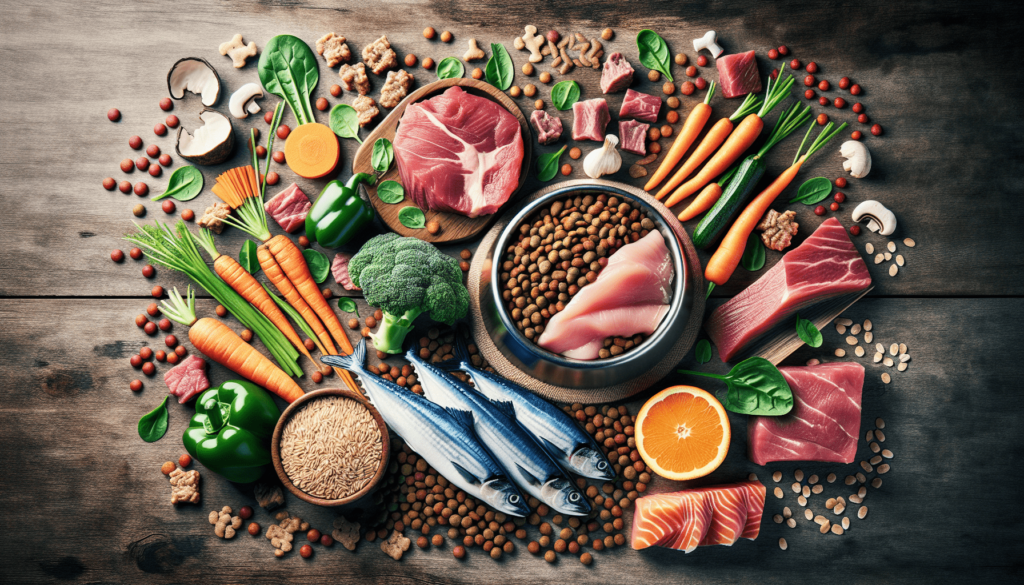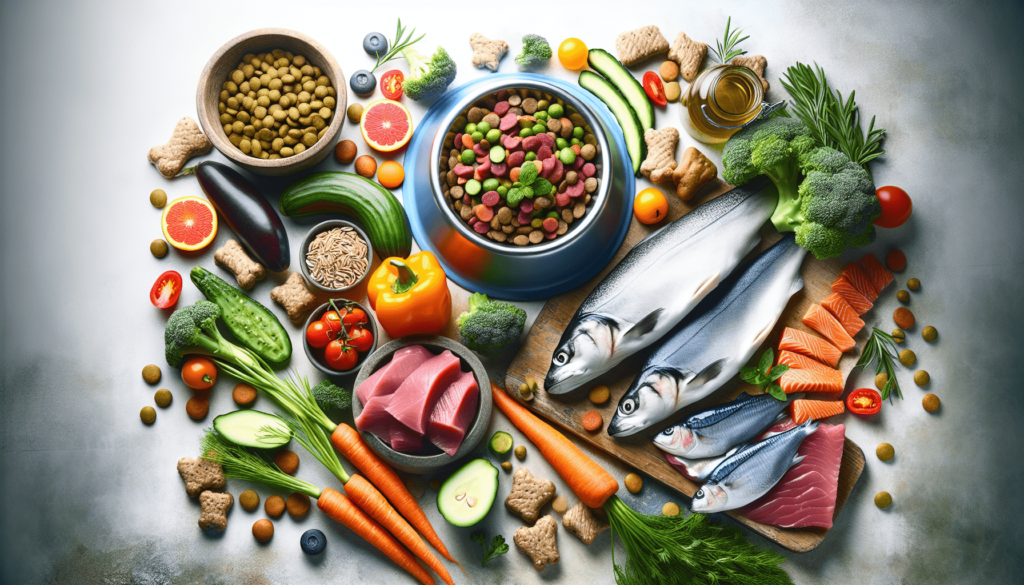Have you ever wondered how you can tell if your dog’s food is nutritionally complete? It’s an essential question that comes up frequently for dog owners. We all want our furry friends to be as healthy as possible, but with so many options and nutritional claims on pet food labels, it can be daunting to figure out which is the best choice.

Understanding Nutritional Completeness
Nutritional completeness in dog food means that the food provides all necessary nutrients required for your dog’s overall health and well-being. Think of it like a human’s balanced diet, which might include the right proportions of proteins, carbohydrates, fats, vitamins, and minerals. Dogs require their own specific balance to thrive.
Breakdown of Essential Nutrients
Your dog’s diet should include key nutrients that are vital to maintaining their health. These nutrients include:
Proteins: Crucial for growth, maintenance, and repair of tissues. High-quality dog foods often list a named meat (like chicken or beef) as the first ingredient.
Fats: Provide energy, support cell function, and aid in nutrient absorption. Omega-3 and Omega-6 fatty acids are particularly beneficial.
Carbohydrates: Offer a quick energy source and can be found in ingredients like rice, corn, or potatoes.
Vitamins and Minerals: Ensure critical functions in your dog’s body. Calcium, for instance, is essential for healthy teeth and bones.
Water: Often overlooked, water is essential for your dog’s digestion and temperature regulation. Ensure your dog has access to clean water at all times.
Standards and Regulations
Organizations like the Association of American Feed Control Officials (AAFCO) establish nutritional guidelines to help pet food manufacturers formulate balanced diets. Dog foods that meet these standards usually have a statement on their labels, explaining that they meet AAFCO’s guidelines. When looking for dog food, consider those with the AAFCO statement as these are likely to provide a balanced, complete diet.
Decoding Dog Food Labels
Reading and understanding pet food labels can significantly affect your ability to provide adequate nutrition for your pet. Here are some tips for decoding those labels:
Ingredient List
Ingredients are listed in order of weight. Ideally, a high-quality meat source should be the first ingredient. While grains and vegetable proteins can be part of a balanced diet, they should not be the predominant ingredient.
Guaranteed Analysis
This part of the label shows the minimum percentages of crude protein and fat, along with the maximum percentages of fiber and moisture. While these values provide a helpful overview, they don’t assess the quality of the ingredients.
Here’s a simple table to illustrate important components found on the guaranteed analysis:
| Component | What to Look For |
|---|---|
| Crude Protein | High percentage (20% or more) for adult dogs |
| Crude Fat | Moderate levels (10-15%) ensuring energy without excessive weight gain |
| Crude Fiber | Low levels (around 3-5%) |
| Moisture | Ensure appropriate balance (not too dry, generally below 12%) |
Nutritional Adequacy Statement
This statement discusses whether the food is adequate for a particular life stage, such as ‘growth and reproduction’ or ‘adult maintenance’, according to AAFCO guidelines. This is a strong indicator of whether the food is nutritionally complete for your dog’s specific needs.

Special Considerations
While most dogs thrive on commercially prepared dog food that meets AAFCO guidelines, some dogs have special dietary needs due to allergies, medical conditions, or life stage.
Life Stages and Breed Sizes
Puppies, adults, and senior dogs have different nutritional requirements. Similarly, small and large breed dogs may have particular needs due to their size. Puppy food, for example, often contains more protein and fat to support growth, whereas senior dog foods might be lower in calories to prevent obesity in less active dogs.
Medical Conditions
If your dog has specific health concerns, such as kidney disease or diabetes, consult your vet. They might recommend specialized therapeutic diets that address these specific health issues rather than regular commercial products.
Transitioning to a New Food
Just like abruptly changing a routine can upset a small child, changing your dog’s food suddenly can cause digestive upset.
Step-by-Step Transition
To smoothly transition, gradually mix in the new food with the old food over 7-10 days.
- Days 1-3: 75% old food, 25% new food.
- Days 4-6: 50% old food, 50% new food.
- Days 7-9: 25% old food, 75% new food.
- Day 10 onwards: 100% new food.
Transitioning gradually helps your dog’s digestive system adjust and gives you an opportunity to monitor for any adverse reactions to the new food.
Involving Your Veterinarian
Your veterinarian is a crucial resource in determining the best diet for your dog. Before you decide on a food, particularly if you’re considering a homemade diet, always consult your vet. Veterinarians can provide guidance tailored to your dog’s unique health needs, age, and lifestyle.
Conclusion
Determining if your dog’s food is nutritionally complete might feel like unraveling a mystery, but by understanding the essential nutrients, reading labels carefully, and involving your veterinarian, you can make informed decisions. Provide your dog with a diet that supports their health, energy, and happiness.
Frequently Asked Questions
How can I tell if my dog’s food is nutritionally complete?
Look for a nutritional adequacy statement from AAFCO on the label. This statement indicates that the food meets established nutritional guidelines for complete and balanced diets.
What should I do if my dog has a sensitive stomach?
Consider transitioning to a limited-ingredient diet formulated for sensitive stomachs. Always seek advice from your veterinarian for personalized recommendations.
Are grain-free diets necessary?
Not necessarily. While some dogs benefit from grain-free diets, carbohydrates like rice and barley are healthy for many dogs. Ensure any diet meets the approved nutritional guidelines for your dog’s needs.
Can I feed my dog a raw diet?
A raw diet can provide nutritional benefits, but it also carries risks, such as bacterial infections. Consult your vet to ensure that a raw diet would be suitable for your dog.
Through vigilance and some savvy label reading, you can ensure your dog’s meals are both tasty and nutritionally complete!



